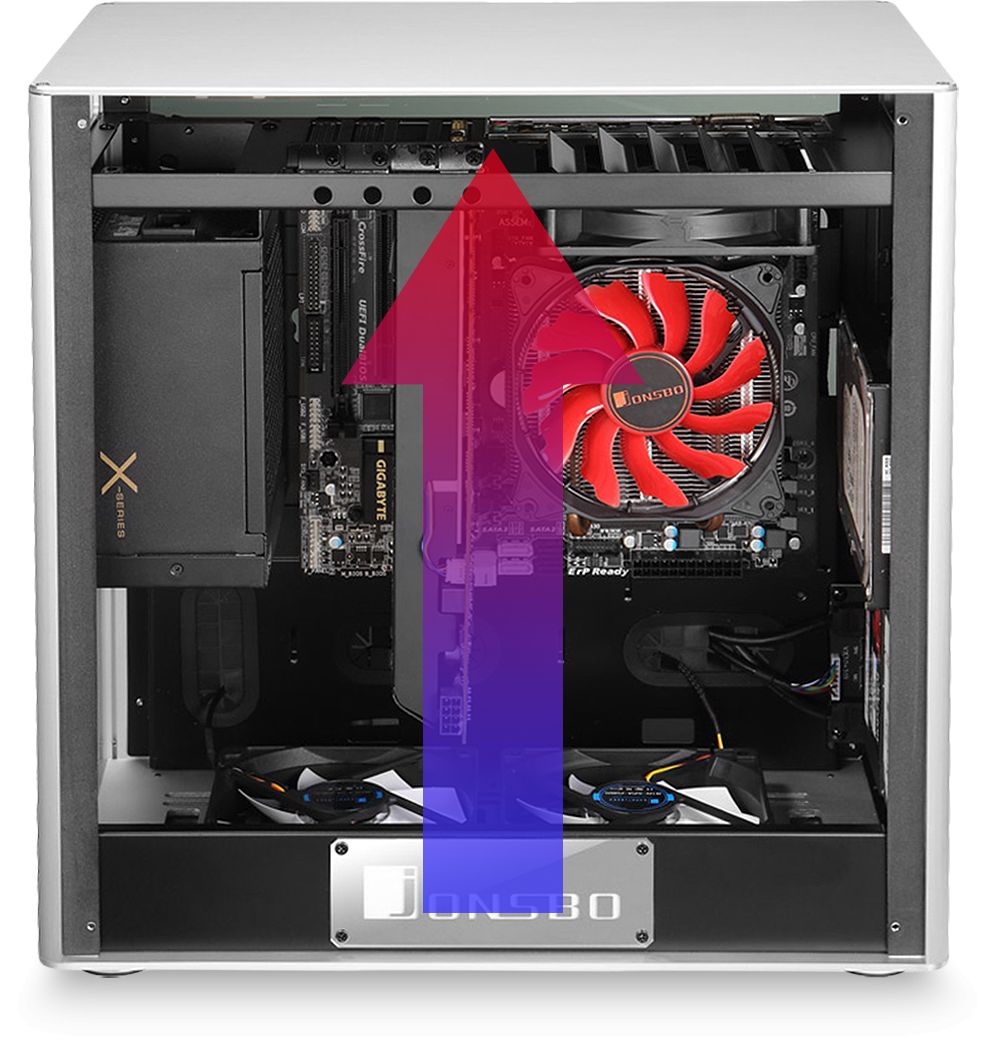
This one should be obvious, you really don’t want dust in your system.

You don't want hot air exhausted out the front and onto you. The rear of the computer is usually confined, so it’s a bad place to have intake fans. As stated before, hot air rises so cool air is near the bottom of your case, while the heat from your computer is above it. There are several reasons why this is the best method: That said, it makes the most sense to place your exhausting fans near the top of the case while your intake fans stay near the bottom. One of the most important things to remember about cooling: heat rises. Rule #3: Exhaust Out the Top and Rear, Intake Through the Bottom and Front

This is less important (if you have a computer with mesh paneling) than it used to be with the advent of computer cases with mesh paneling, since there tends to be more paths for air to escape from the case. It builds on natural convection and works with graphics cards. Negative pressure provides the best cooling performance for enthusiast (often heat intensive) builds.

That said, one of the benefits of Positive Pressure is that less dust will enter the system. In general, positive pressure doesn’t cool as well as negative pressure will. Stagnant air leads to higher internal temperatures since there aren't enough fans removing the heated air from the inside of the case. This is important to remember because having more intake fans (Positive Pressure) than exhaust can lead to stagnant air. Rule #2: Have More Exhaust Fans Than Intake Fans (Negative Pressure) It's a much better idea to have your radiator placed at the top or rear of your case (See Rule #3), so cooler internal air can be used to cool the loop. To many beginning watercoolers this seems to be ideal since it brings cold air through the radiator however, this has the adverse effect of putting hot air into the case, bringing the ambient temperature up. Usually, the error comes when installing a fan, the builder simply isn't paying attention, and the fan is installed so that it blows air in the wrong direction.Īnother common mistake is to have radiator over an intake fan. Now, you may be thinking that this is a stupid rule, but let me assure you, this is the most common error people make when setting up their cooling system. The good news is, that the basic rules for good airflow remain the same, no matter what components you have, your case, or where your case is. Not paying attention to how you set up your computer's fans can severely degrade your system's ability to cool itself. However, the ambient temperature inside the case is just as important, if not more so, since it affects the entire computer. Many builders think that core temperature is the only important measurement when it comes to the computer and its cooling capabilities.

BEST AIRFLOW DIRECTION FOR PC PC
How air flows through a computer's chassis is one of the least considered things by many pc builders when it comes to assembling their PCs. I geared this as being a basic rundown, so if there are some parts missing, don't worry, this isn't meant to be an all-encompassing guide. Welcome to Airflow 101! If you've come here because you're new to PC Building, or if you're a veteran who just wants to see if there are any ideas you can use, you're in the right place. Don't forget to check out other 101 articles:


 0 kommentar(er)
0 kommentar(er)
